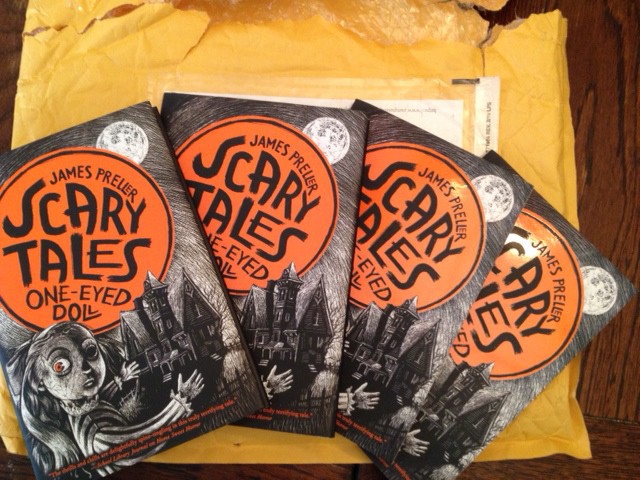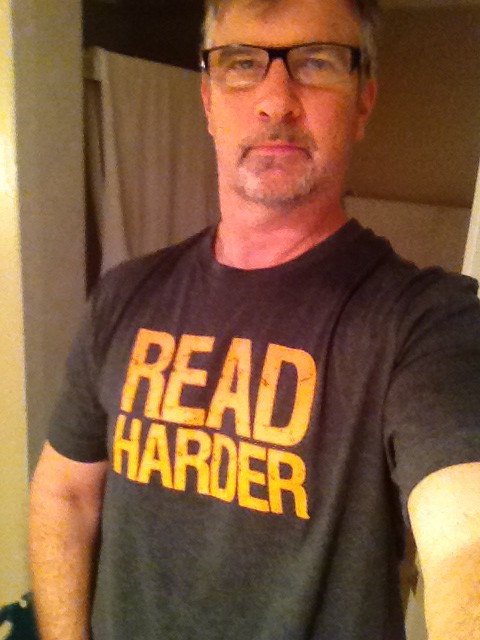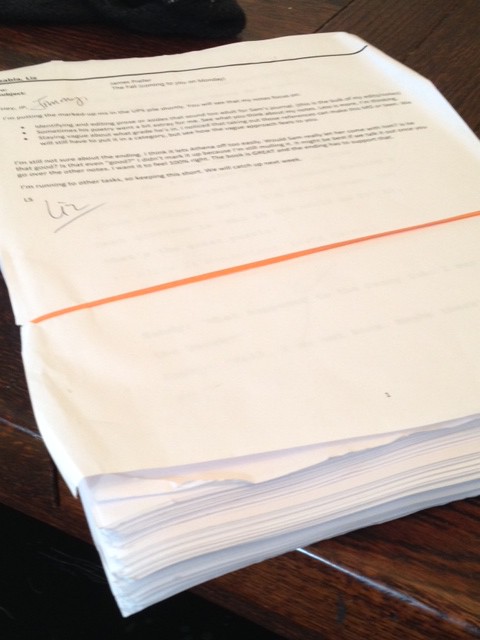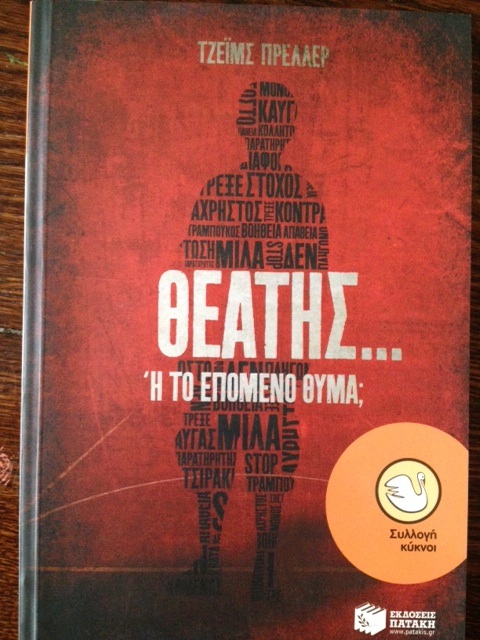
On Friday the 20th, I traveled to Wolcott, Connecticut, where I spoke to 650 students, grades 6-8, at Tyrrell Middle School. They had all read Bystander as part of their summer reading program and, I’m sure, as part of their school-wide anti-bullying initiative. The feeling in that school was very impressive. Thank you for all your hard work to make this happen, Sara Tedesco. I’ve been wearing the shirt!
Wait. What shirt?
This one:

That’s the design on the back of the long sleeve shirt created and sold (I think) at the school. I was presented with one as a gift. The design, created by the librarian, Sara Tedesco, was a variation of the Bystander book cover, with a more positive, local spin. Brilliant.
Come to think of it, those students said they read Bystander. But I’ll admit it, some of those kids looked pretty tan. When I see young people under these circumstances, I often apologize, explaining that in all my hopes and wild dreams, I never intended to become somebody’s homework.
On Sunday, I flew from Albany, NY, to Chicago, and then on to Oklahoma City for four full days of visits in the Yukon school district.
Maybe you’ve heard of it.
Garth Brooks was born and raised there.

The main school I visited — it had a big auditorium, so several neighboring schools bused their students to us — was located on Garth Brooks Drive, because of course it was.
My first morning I stopped into a 7-11, still groggy & desperate for caffeine. After I completed the purchase of one cold Starbucks Mocha something, the cashier asked:
“Would you like a sack with that?”
“Excuse me?”
“Would you like a sack?”
My brain was still fuzzy. The flight had been delayed. I had slept less than four hours. “A sock?”
(Yes, in my pre-caffinated state, I silently wondered if, perhaps, in Oklahoma cashiers offered people socks. Maybe this is what they do here? “Why, yes! I’ll take argyle!”)
(Next comes helpless staring, where wonderment meets bewilderment. At last a light bulb goes on.)
“A sack!” I say. “Like a bag!”
“Yes, sack, bag. I call ’em sacks.”
At that moment, I knew that I had fully arrived in Oklahoma. The land of sacks, not bags, far from the standard question of, “Paper or plastic?”
Across four days in the Sooner state, I gave thirteen presentations to 5,600 students, grades 2-8. And I can honestly say that they all loved me, every single one of them.
Actually, well, there was one kid . . .
The truth is, everyone treated me wonderfully throughout the visit. Respectfully, kindly. I felt blessed and fortunate. I can’t thank everyone enough, and won’t really try to here (I tried to there, in person).
Wednesday night I made it over to the Oklahoma City National Memorial & Museum.

The museum was incredibly moving, artistic and powerfully effective. I was, at times, a blubbering mess, but in a good way.


If you ever get the chance, by all means, yes, get yourself over to the museum — and prepare to feel the power of that experience right down to the soles of your shoes.

Then I walked over to Bricktown and treated myself to a “cowboy steak” at Mantle’s restaurant, just across from the ballpark. It was a peaceful, reflective, delicious meal, and I was happy to be exactly where I was.

Thank you, Yukon, OK. It was really terrific for me to gain a first-hand experience of Sooner Pride. To meet all those kids. And try, in my own limited way, to leave each school a slightly better place where together we value reading, thinking, and basic human kindness.
Most especially, thank you Jenah Hamilton, middle school librarian, the force of nature who made my visit possible.
(I owe you, big time.)
 Writing “scary” has been liberating. A blast. In the past, I’ve mostly written realistic fiction. But for these stories I’ve tapped into a different sort of imagination, what I think of as the unpossible. The trick is that once you accept that one impossible element—a zombie or a ghost in the mirror—then the story plays out in a straightforward manner.All storytelling has its backbone in realistic fiction.
Writing “scary” has been liberating. A blast. In the past, I’ve mostly written realistic fiction. But for these stories I’ve tapped into a different sort of imagination, what I think of as the unpossible. The trick is that once you accept that one impossible element—a zombie or a ghost in the mirror—then the story plays out in a straightforward manner.All storytelling has its backbone in realistic fiction. The response to Bystander has been incredible—and humbling. Many middle schools have used it as their “One School, One Book” community reads, which is such an honor.I attempted to write a lively, unsentimental, informed, fast-paced story. I hope that I’ve given readers something to think about, while leaving them to draw their own conclusions. I didn’t write a pamphlet, 10 steps to bully-proof your school. Robert McKee, in his book Story, says that stories are “equipment for living.” I believe in the power of literature to help us experience empathy.
The response to Bystander has been incredible—and humbling. Many middle schools have used it as their “One School, One Book” community reads, which is such an honor.I attempted to write a lively, unsentimental, informed, fast-paced story. I hope that I’ve given readers something to think about, while leaving them to draw their own conclusions. I didn’t write a pamphlet, 10 steps to bully-proof your school. Robert McKee, in his book Story, says that stories are “equipment for living.” I believe in the power of literature to help us experience empathy.













